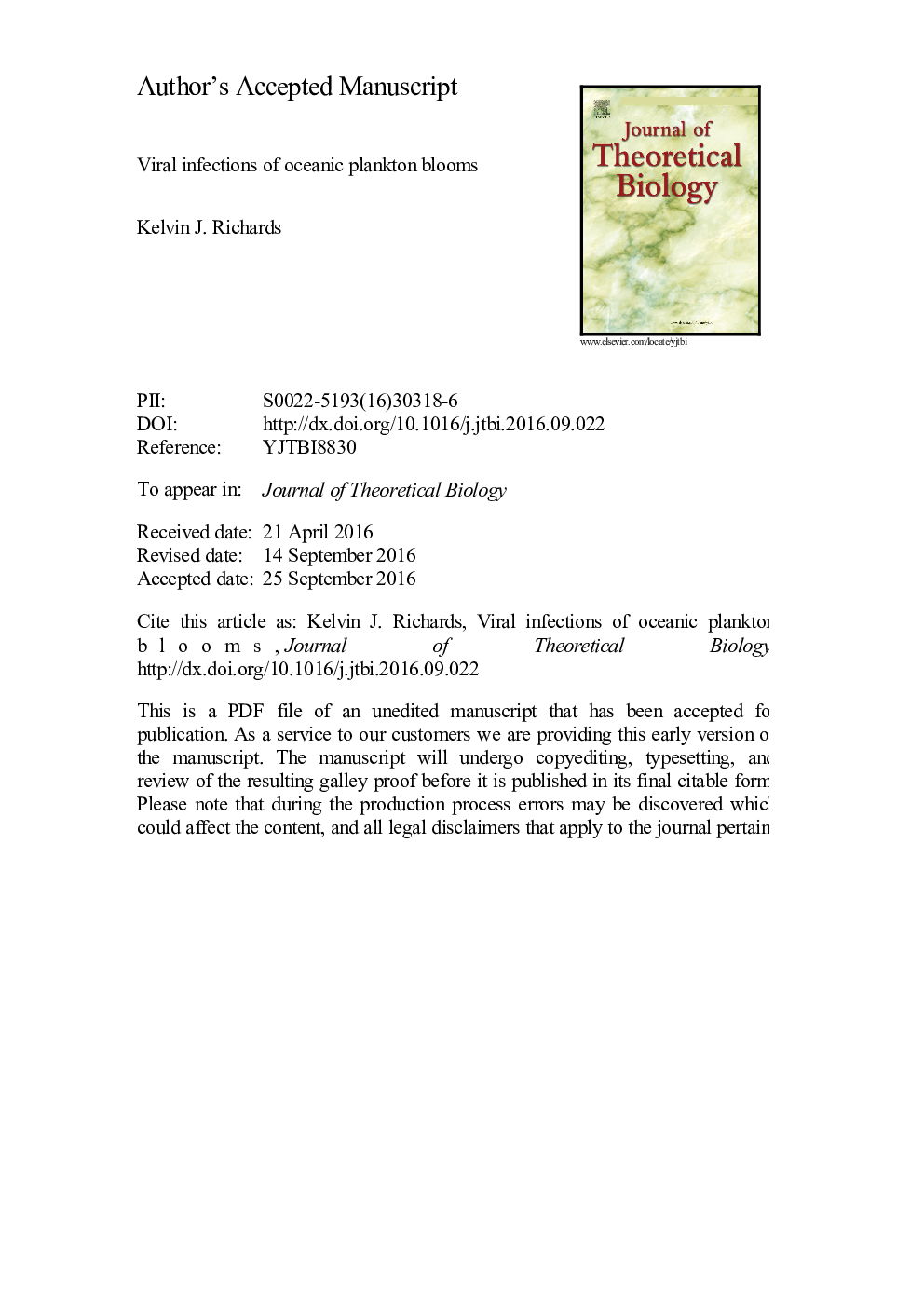| Article ID | Journal | Published Year | Pages | File Type |
|---|---|---|---|---|
| 6368796 | Journal of Theoretical Biology | 2017 | 26 Pages |
Abstract
Viruses are known to impact blooms of phytoplankton in the ocean, in some cases causing the bloom to crash. Here, using a population model that includes viral infection, we investigate the conditions under which the presence of a virus significantly impacts the population dynamics. A major focus is how spatial variability influences the spread of an epidemic in a stirring and mixing field. The combination of viral infection and diffusion can cause waves of the epidemic to sweep through the domain, with the epidemic lasting much longer than in the homogeneous case. Stirring by the fluid flow can greatly increase this effect causing an increase in the fraction of the bloom that is affected and in certain circumstances (high diffusion and stirring) can totally suppress the bloom. The fluid environment affects the relative spatial structure of the components of the system. High values of the concentrations of the virus and infected phytoplankton are found in thin filaments along fronts of uninfected (susceptible) phytoplankton.
Keywords
Related Topics
Life Sciences
Agricultural and Biological Sciences
Agricultural and Biological Sciences (General)
Authors
Kelvin J. Richards,
